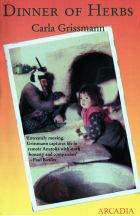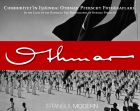Buy or gift a stand-alone digital subscription and get unlimited access to dozens of back issues for just £18.99 / $18.99 a year.
Please register at www.exacteditions.com/digital/cornucopia with your subscriber account number or contact subscriptions@cornucopia.net
Buy a digital subscription Go to the Digital EditionUntil 1950, no travellers were permitted to cross the Euphrates. Southeast Turkey was simply out of bounds. Among the first to visit when restrictions were finally lifted was a photographer, the late Cafer Türkmen. Travelling by train, truck, Jeep and mule, he discovered a place of dramatic beauty and a way of life barely changed for thousands of years. Türkmen’s pictures of this remote land, to which Cornucopia devotes thirty pages, are all the more poignant because roads would soon be built and villages of stone and adobe would vanish beneath concrete. He was the official photographer for two expeditions, led by the great German zoologist Curt Kosswig, in pursuit of two ancient species – a saltwater fish in the hills above Lake Van and the fabled bald ibis of Birecik. Türkmen told Berrin Torolsan and John Scott the story of these ground-breaking journeys
The expeditions undertaken by Curt Kosswig and photographed by Cafer Türkmen provide the first views of Turkey’s eastern frontierland, which, for security reasons, had been hidden from outside view from 1914 until 1950. The moment that the curtain was lifted, this remote, dramatic country with a profoundly ancient culture immediately began to lure travellers, historians and scientists such as Kosswig, who undertook two small but ground-breaking expeditions, in 1952 and 1954.
An exile from pre-war Nazi Germany, Kosswig had become a doyen of the newly created department of zoology at Istanbul University, where he nurtured ambitions to create a Turkish natural history museum.
It was for this project that he recruited Cafer Türkmen, a talented young photographer and pupil of the fledgling academic study of photography as art. Although Kosswig never realised his museum plan, by taking Türkmen on his expeditions, he gave the young photographer the opportunity of compiling a unique body of work on Turkey’s rich animal life.
Born in Berlin in 1903, Kosswig had left Germany in 1937 after a spate of Nazi-prompted sackings: his area of research, genetics, made his position particularly sensitive. With his wife, Leonore, a trained botanist, he made his home in Istanbul, becoming part of the substantial intellectual diaspora that did so much to drag Turkish academic life into the modern age in the early decades of the Republic.
Today the Kosswigs are best remembered in Turkey for founding the nature reserve at Manyas, near Bandırma on the Sea of Marmara. They set up the reserve soon after they arrived in the country, having observed its extraordinary and fragile habitat, which feeds and shelters migrating and nesting birds.
Curt Kosswig returned to Germany in 1954 to head Hamburg’s zoological institute and is still highly respected in the more esoteric world of academic zoology, especially in the field of genetics. He never severed his ties with Turkey and is buried on the Bosphorus in Istanbul, having died in 1982.
Cafer Türkmen was born in 1920 near the Black Sea town of Ordu, and at seventeen began training as a primary school teacher. He acquired a second-hand Kodak and a manual on photography and he taught himself the basics of using a camera. While quietly nurturing artistic ambitions, he did his military service from 1939 to 1941, starting at Istanbul’s officers’ school (now the Military Museum) in Harbiye. In 1942 he was appointed headmaster of a village primary school near the Black Sea.
A wartime shortage of film put paid to his photography and he applied to study maths at university. On a visit home in May 1943, however, he had a fortuitous meeting with Adnan Kocabay, a newly appointed art teacher at Trabzon University, who helped him to apply for a three-year course in pictorial art at the Gazi Educational Institute in Ankara. The photography course at the institute had been cancelled because of the lack of film, and it is a measure of Türkmen’s determination to fulfil his dream that he managed to convince Şinasi Barutçu, a pioneer teacher of photography as art, to run the photography course as pure theory.
After the war, a shortage of materials meant that every film had to be dispatched to Germany to be developed and every print inspected by the authorities in Ankara. In 1946 Türkmen won first prize in the national Halkevleri awards for photography. Needing both a job and subjects to photograph, he offered his services to the Archaeological Museum, but they had no resources to employ him. Hearing that Curt Kosswig had received authorisation from the government to set up a national history museum, Barutçu suggested that Türkmen went to work for the German professor. If he accepted the job, he would be sent first to Austria for further study.
Kosswig was impatient, however. He told Türkmen not to go Austria; instead he would set him up in Istanbul with all the film and equipment he might need. And so Türkmen bought his first Leica and equipped his first darkroom without ever studying abroad.
The two men formed an interesting partnership. Kosswig was looking for clear, scientific animal studies. Türkmen was in urgent need of materials, but he was anxious to put his theoretical training to the test. The assignments suited his love of classical, even monumental, composition, as well as his interest in photography as a medium of record. Now that he is in his eighties and has given up teaching photography, which he did for many years at Istanbul’s Fine Arts Academy, Türkmen is realising the value of the work that he did more than fifty years ago.“For years photographs have been taken of the Bird Paradise at Manyas, and there are some fine images among them,” he says. “But you never see the large numbers together that were in my first pictures. The same has happened with the bald ibis. This is the documentary value of photography: recording what will never be seen again.
“In 1946, a leopard lived in the Izmir zoo. A notice on the cage said: ‘Danger! Don’t approach! You will be torn to pieces.’ I put the lens of my very ordinary camera through the bars and took three shots. The first one the leopard was calm, the second it became angry and snarled. I took another and hopped it. That turned out to be the last Anatolian leopard [Panthera pardus tulliana]. My pictures are the only ones of it alive.”
From 1947, Türkmen made frequent tours of Anatolia with Kosswig, who was particularly interested in fish species. In 1948 they travelled to Hayırsızova, Yalova and Uludağ, in 1949 to Abant and Bolu. In 1951, the Hydrobiological Institute was opened at Baltılimanı on the Bosphorus, with Kosswig again in charge. Türkmen joined the staff, remaining there until Kosswig’s resignation in 1964. Among other projects, he helped Kosswig to prepare a fisherman’s calendar of Turkey, showing what fish were where at any given time, and contributed striking animal, plant, insect and bird portraits to the Turkish nature magazine Biologi.
In the summer of 1952, Kosswig and Türkmen set out on the first of their adventures to the southeast, in search of the prehistoric saltwater fish of the streams south of Lake Van, the vantuzlu balık, literally the fish with suckers. The party included Leonore Kosswig, two zoologists from the institute – Muhtar Başoğlu, Turkey’s first scientific herpetologist, and Perihan Sadoğlu – and an assistant, Cevat Altıok.
Türkmen’s pictures, part diary and part scientific record, also captured images of a way of life that was about to disappear. The party travelled by train as far as Kurtalan, then continued by van, boat, Jeep and mule to Tatvan, Van, Hakkari, Beytüşşebab, Şırnak, Eruh and Siirt.
On a second trip, in 1954, they continued their circuit to record the bald ibis, the sacred bird of the ancient Egyptians, which nested in vast numbers in the cliffs above Birecik on the Euphrates. These amateur explorers may look in the photographs like escapees from a spaghetti western – and they were often having enormous fun – but their work was serious, and the record they made is unsurpassed. Just as no one now sets out to travel hundreds of miles on muleback, so the bald ibis no longer nests above Birecik.
Cafer Tayyar Türkmen (1920–2007) was the much loved tutor of Cornucopia’s publisher and cookery writer, Berrin Torolsan, at the Academy of Fine Arts. He also taught the photographer Zafer Baran.
There has been no road map in the life of Josephine Powell. As restless as the nomadic tribes she followed, she has simply let things happen. But along the way, she has become a photographer and an expert on the nomads of Turkey and their textiles. And now she dreams of a permanent home for her exceptional kilims and photographs. Andrew Finkel pays tribute to a remarkable friend
The Hôtel de Lamballe was home to a doomed princess and an asylum for mad artists before it became Turkey’s embassy in Paris. Patricia Daunt reveals the turbulent past behind its serene facade. Photographs by Jean Marie del Moral
Abandoned in Greece at the end of the Ottoman Empire, the Turks of Thrace cling defiantly to their old ways. By Owen Matthews. Photographs by Ashley Gilbertson
Art from Florence and Amsterdam joins the work of a local court painter in Istanbul for two major international exhibitions
The pictures that fired Europe’s imagination with their visions of Istanbul and the Ottoman court returned to the city for the first time in more than 250 years. Philip Mansel looks at the extraordinary paintings of Jean Baptiste Vanmour
The knobbly tubers stay fresh and crisp, and even become sweeter, if they are left in the ground; after frost and snow, they really taste like apples. Nutritionally, the tuber has valuable properties: as a diuretic, it benefits the kidneys; it stimulates the milk of nursing mothers; and it is considered a potent aphrodisiac.
More cookery features



Cornucopia works in partnership with the digital publishing platform Exact Editions to offer individual and institutional subscribers unlimited access to a searchable archive of fascinating back issues and every newly published issue. The digital edition of Cornucopia is available cross-platform on web, iOS and Android and offers a comprehensive search function, allowing the title’s cultural content to be delved into at the touch of a button.
Digital Subscription: £18.99 / $18.99 (1 year)
Subscribe now